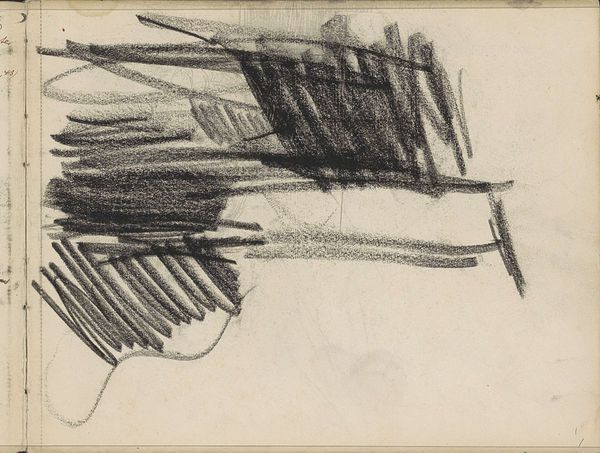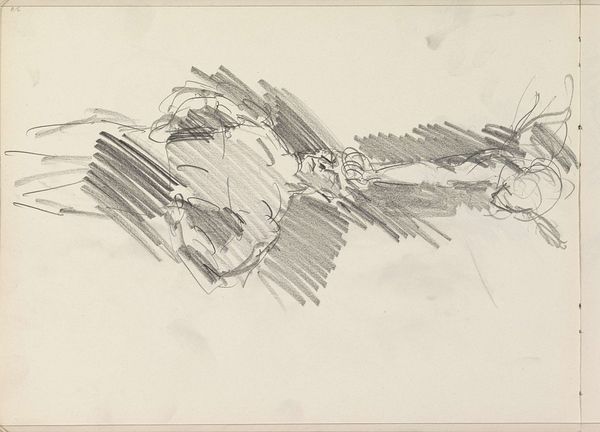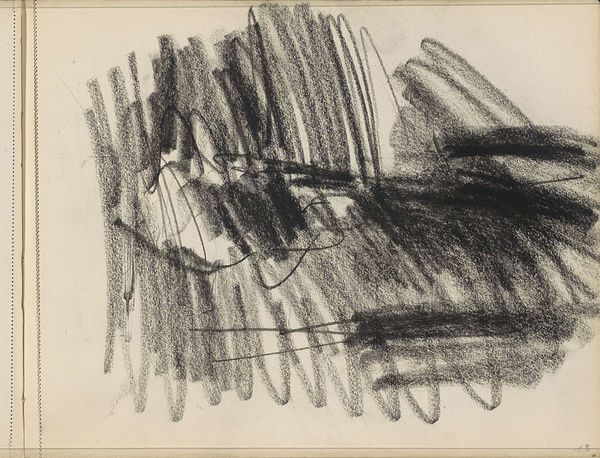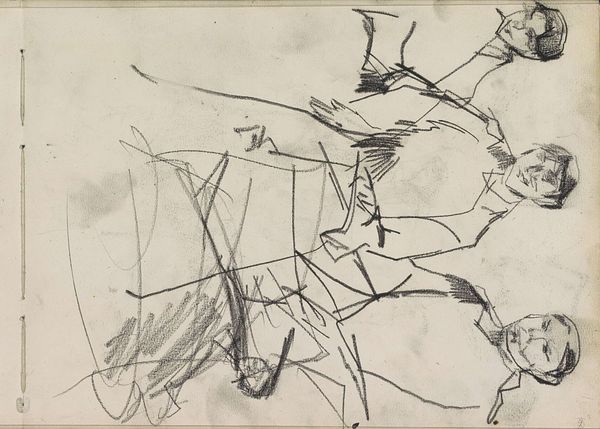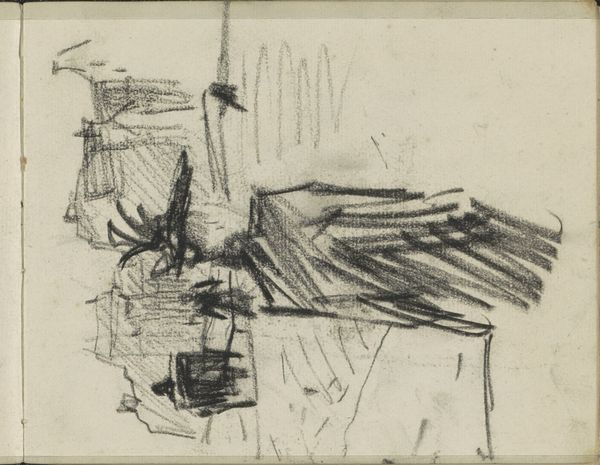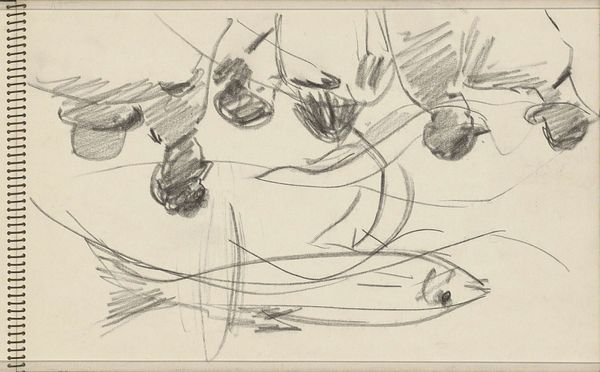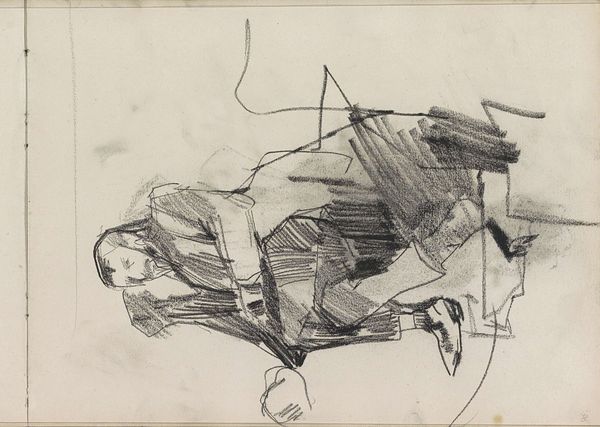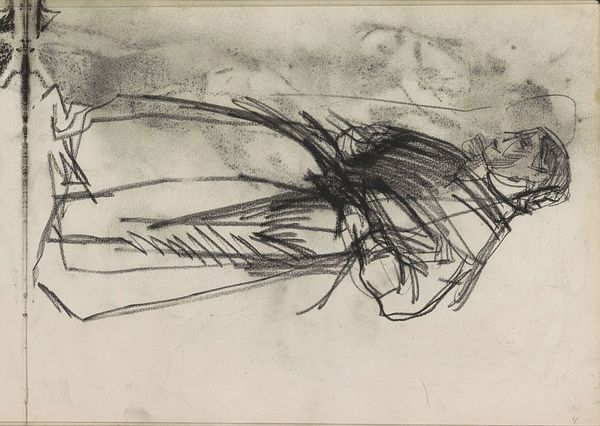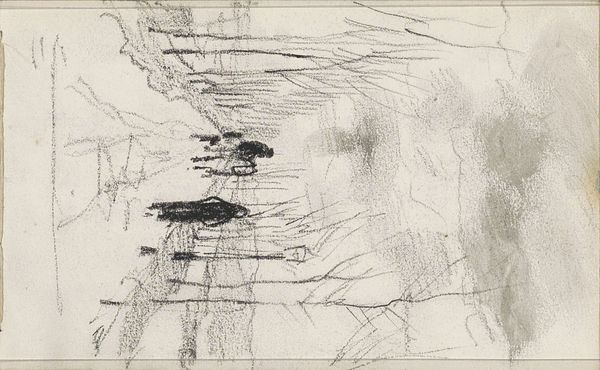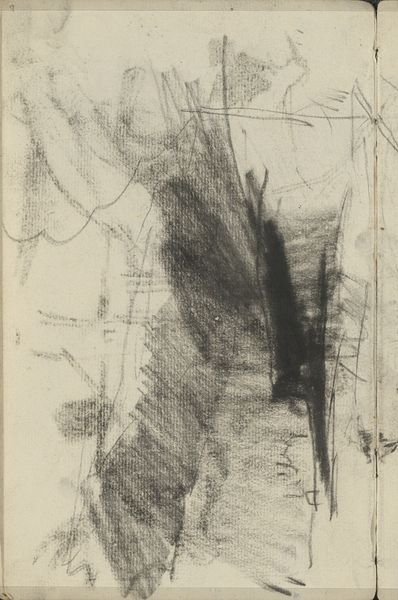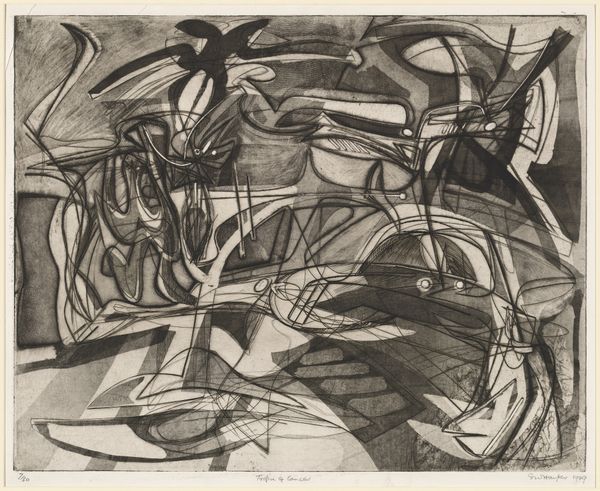
Copyright: Rijks Museum: Open Domain
Editor: This is "Drie Vrouwen," or "Three Women," by Isaac Israels, created sometime between 1892 and 1900. It's a pencil drawing. The rapid, sketch-like quality almost makes the figures feel transient. I'm curious, what stands out to you about this piece? Curator: The immediacy is key. Israels’s quick pencil work underscores the changing nature of labor in the late 19th century. Think of it: cheap materials like paper and readily available pencils allowed for artistic documentation of everyday life in a way that the heavy machinery of academic painting simply couldn't. Are these women laborers, perhaps in a textile factory? Their garments and posture may point to this. Editor: So you're saying the medium itself – the accessibility of pencil – influenced what he could depict? Curator: Precisely. Israels moves away from depicting wealthy patrons or grand historical events. Instead, his materials enabled a focus on the working class and their representation. The medium allowed him to quickly capture a moment, the nuances of a posture that would be normally missed. Editor: That’s fascinating! I hadn't considered how the very tools used could democratize the subjects depicted. So it's not just *what* is depicted, but *how* and with what materials, reflecting the social changes. Curator: Exactly! We see here not only three women, but the impact of the Industrial Revolution reflected in artistic practice, down to the simplest drawing material. Editor: This gives me so much to think about! Looking at the piece as more than just an image but a record of the changing relationship between art, labor, and the everyday.
Comments
No comments
Be the first to comment and join the conversation on the ultimate creative platform.
